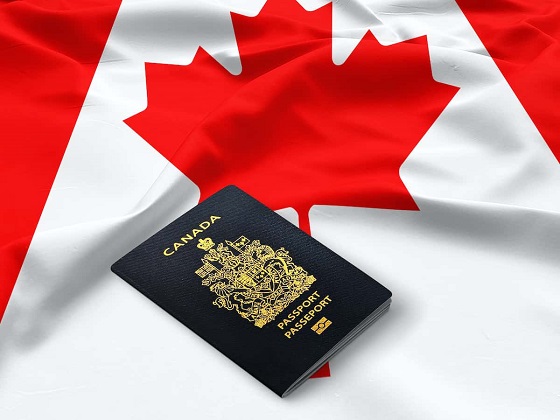Frontier Centre for Public Policy
How much do today’s immigrants help Canada?

From the Frontier Centre for Public Policy
Newly arriving immigrants require housing, infrastructure and services right away. But even including other construction workers with the 2 percent who are qualified, working-age artisans, immigrants don’t come close to building the housing they occupy. Along with paying taxes to support new arrivals, oppressive housing and living costs then deter procreation for many would-be parents in the existing population.
The relationship between GDP, productivity, and immigration
It is almost universally accepted that Canada needs immigration and the corresponding population increase to keep the economy going. That is how experts say we are supposed to get economic growth along with improvements in productivity and higher per capita GDP.
But how much of that is true?
First, GDP as a measure of economic activity and national prosperity has limitations. Adjusted for both inflation and the increase in Canada’s population, per capita GDP was in free fall in 2022 and 2023—at minus 2.6 and minus 3.9 respectively.
GDP says nothing about its distribution among the population. Inflation enriches those who own housing and other hard assets, but leaves behind those who do not own them. Notably, with demand overwhelming supply, immigrants’ housing needs and other requirements generate inflation and widen the gap between rich and poor.
It is also necessary to consider what GDP comprises. There is a rough and ready distinction between investment and consumption although the distinction is fuzzy. Broadly speaking, new and more efficient machinery improve productivity, enabling workers to deliver more value for the time they spend working. The consumption part of GDP includes a long list of activities necessary for sustaining life—everything from buying groceries to fixing broken windows, retailing goods made in China, and maintaining the superstructure of government.
Conventional wisdom is that immigration is necessary to make up for the decline in the home-grown population resulting from the birth rate below replacement. But that represents a vicious circle. Much of Canada’s GDP involves building homes and infrastructure, and supporting immigrants—all consumption components. Newly arriving immigrants require housing, infrastructure and services right away. But even including other construction workers with the 2 percent who are qualified, working-age artisans, immigrants don’t come close to building the housing they occupy. Along with paying taxes to support new arrivals, oppressive housing and living costs then deter procreation for many would-be parents in the existing population.
Many employers and politicians promote immigration. That is because immigrants tend to be more industrious and reliable than young home-grown Canadians. Immigrants and their children are generally prepared to work at current pay rates without clock-watching. And there is less pressure to install labour-saving equipment when a pool of people is ready and willing to work for what they get paid.
It’s also necessary to consider that for decades, technology, robots, and more efficient use of labour have been eliminating jobs. Some estimates have it that up to a third of all current jobs will disappear over the next 10 to 15 years. All this said, I look to history and other countries for how changes in population impact productivity and community well-being. In recorded history, the biggest advances in real per capita income occurred in Europe after the bubonic plague killed about half the population between 1347 and 1352. The shortage of labour made workers much more valuable. Feudalism ended and there was a huge surge in wages rates and women’s rights.
In recent times, the population of Japan has been expanding only slowly, and is declining now. In 2023, business capital investments hit a record high at US $223 billion, up 17 percent from the previous year. The question now is whether productivity gains will be enough to sustain its ageing and shrinking population. For Canada, in contrast, per capita business investment, adjusted for inflation and population, has been declining and was sharply lower in 2022-23.
There is another problem. Too many immigrants expect to take advantage of our generous welfare. It may cost $1,000 per person per month to support an immigrant who does not immediately get a job. That must be many times more than it costs to keep that person in a refugee camp.
Of course, Canada has the duty to take in refugees at risk of persecution. And, as Singapore does, employers should be able to hire immigrants for specific top-end jobs where Canada does not have the home-grown expertise.
It is no long-term answer to support people in camps. Troubled countries—Haiti, for example—need security and business investment to enable their self reliance. Countries like Canada need to generate their own wealth to make that possible and not just for the good of our own citizens. This requires diverting GDP back to the non-residential business investment that is the lifeblood of a healthy and sustainable economy.
Colin Alexander’s degrees include Politics, Philosophy, and Economics from Oxford. His latest book is Justice on Trial.
Frontier Centre for Public Policy
New Book Warns The Decline In Marriage Comes At A High Cost

From the Frontier Centre for Public Policy
Travis Smith reviews I… Do? by Andrea Mrozek and Peter Jon Mitchell, showing that marriage is a public good, not just private choice, arguing culture, not politics, must lead any revival of this vital institution.
Andrea Mrozek and Peter Jon Mitchell, in I… Do?, write that the fading value of marriage is a threat to social stability
I… Do? by Andrea Mrozek and Peter Jon Mitchell manages to say something both obvious and radical: marriage matters. And not just for sentimental reasons. Marriage is a public good, the authors attest.
The book is a modestly sized but extensively researched work that compiles decades of social science data to make one central point: stable marriages improve individual and societal well-being. Married people are generally healthier, wealthier and more resilient. Children from married-parent homes do better across almost every major indicator: academic success, mental health, future earnings and reduced contact with the justice system.
The authors refer to this consistent pattern as the “marriage advantage.” It’s not simply about income. Even in low-income households, children raised by married parents tend to outperform their peers from single-parent families. Mrozek and Mitchell make the case that marriage functions as a stabilizing institution, producing better outcomes not just for couples and kids but for communities and, by extension, the country.
While the book compiles an impressive array of empirical findings, it is clear the authors know that data alone can’t fix what’s broken. There’s a quiet but important concession in these pages: if statistics alone could persuade people to value marriage, we would already be seeing a turnaround.
Marriage in Canada is in sharp decline. Fewer people are getting married, the average age of first marriage continues to climb, and fertility rates are hitting historic lows. The cultural narrative has shifted. Marriage is seen less as a cornerstone of adult life and more as a personal lifestyle choice, often put off indefinitely while people wait to feel ready, build their careers or find emotional stability.
The real value of I… Do? lies in its recognition that the solutions are not primarily political. Policy changes might help stop making things worse, but politicians are not going to rescue marriage. In fact, asking them to may be counterproductive. Looking to politicians to save marriage would involve misunderstanding both marriage and politics. Mrozek and Mitchell suggest the best the state can do is remove disincentives, such as tax policies and benefit structures that inadvertently penalize marriage, and otherwise get out of the way.
The liberal tradition once understood that family should be considered prior to politics for good reason. Love is higher than justice, and the relationships based in it should be kept safely outside the grasp of bureaucrats, ideologues, and power-seekers. The more marriage has been politicized over recent decades, the more it has been reshaped in ways that promote dependency on the impersonal and depersonalizing benefactions of the state.
The book takes a brief detour into the politics of same-sex marriage. Mrozek laments that the topic has become politically untouchable. I would argue that revisiting that battle is neither advisable nor desirable. By now, most Canadians likely know same-sex couples whose marriages demonstrate the same qualities and advantages the authors otherwise praise.
Where I… Do? really shines is in its final section. After pages of statistics, the authors turn to something far more powerful: culture. They explore how civil society—including faith communities, neighbourhoods, voluntary associations and the arts can help revive a vision of marriage that is compelling, accessible and rooted in human experience. They point to storytelling, mentorship and personal witness as ways to rebuild a marriage culture from the ground up.
It’s here that the book moves from description to inspiration. Mrozek and Mitchell acknowledge the limits of top-down efforts and instead offer the beginnings of a grassroots roadmap. Their suggestions are tentative but important: showcase healthy marriages, celebrate commitment and encourage institutions to support rather than undermine families.
This is not a utopian manifesto. It’s a realistic, often sobering look at how far marriage has fallen off the public radar and what it might take to put it back. In a political climate where even mentioning marriage as a public good can raise eyebrows, I… Do? attempts to reframe the conversation.
To be clear, this is not a book for policy wonks or ideologues. It’s for parents, educators, community leaders and anyone concerned about social cohesion. It’s for Gen Xers wondering if their children will ever give them grandchildren. It’s for Gen Zers wondering if marriage is still worth it. And it’s for those in between, hoping to build something lasting in a culture that too often encourages the opposite.
If your experiences already tell you that strong, healthy marriages are among the greatest of human goods, I… Do? will affirm what you know. If you’re skeptical, it won’t convert you overnight, but it might spark a much-needed conversation.
Travis D. Smith is an associate professor of political science at Concordia University in Montreal. This book review was submitted by the Frontier Centre for Public Policy.
Carbon Tax
Canada’s Carbon Tax Is A Disaster For Our Economy And Oil Industry

From the Frontier Centre for Public Policy
By Lee Harding
Lee Harding exposes the truth behind Canada’s sky-high carbon tax—one that’s hurting our oil industry and driving businesses away. With foreign oil paying next to nothing, Harding argues this policy is putting Canada at a major economic disadvantage. It’s time to rethink this costly approach.
Our sky-high carbon tax places Canadian businesses at a huge disadvantage and is pushing investment overseas
No carbon tax will ever satisfy global-warming advocates, but by most measures, Canada’s carbon tax is already too high.
This unfortunate reality was brought to light by Resource Works, a B.C.-based non-profit research and advocacy organization. In March, one of their papers outlined the disproportionate and damaging effects of Canada’s carbon taxes.
The study found that the average carbon tax among the top 20 oil-exporting nations, excluding Canada, was $0.70 per tonne of carbon emissions in fiscal 2023. With Canada included, that average jumps to $6.77 per tonne.
At least Canada demands the same standards for foreign producers as it does for domestic ones, right? Wrong.
Most of Canada’s oil imports come from the U.S., Saudi Arabia, and Nigeria, none of which impose a carbon tax. Only 2.8 per cent of Canada’s oil imports come from the modestly carbon-taxing countries of the U.K. and Colombia.
Canada’s federal consumer carbon tax was $80 per tonne, set to reach $170 by 2030, until Prime Minister Mark Carney reduced it to zero on March 14. However, parallel carbon taxes on industry remain in place and continue to rise.
Resource Works estimates Canada’s effective carbon tax at $58.94 per tonne for fiscal 2023, while foreign oil entering Canada had an effective tax of just $0.30 per tonne.
“This results in a 196-fold disparity, effectively functioning as a domestic tariff against Canadian oil production,” the research memo notes. Forget Donald Trump—Ottawa undermines our country more effectively than anyone else.
Canada is responsible for 1.5 per cent of global CO2 emissions, but the study estimates that Canada paid one-third of all carbon taxes in 2023. Mexico, with nearly the same emissions, paid just $3 billion in carbon taxes for 2023-24, far less than Canada’s $44 billion.
Resource Works also calculated that Canada alone raised the global per-tonne carbon tax average from $1.63 to $2.44. To be Canadian is to be heavily taxed.
Historically, the Canadian dollar and oil and gas investment in Canada tracked the global price of oil, but not anymore. A disconnect began in 2016 when the Trudeau government cancelled the Northern Gateway pipeline and banned tanker traffic on B.C.’s north coast.
The carbon tax was introduced in 2019 at $15 per tonne, a rate that increased annually until this year. The study argues this “economic burden,” not shared by the rest of the world, has placed Canada at “a competitive disadvantage by accelerating capital flight and reinforcing economic headwinds.”
This “erosion of energy-sector investment” has broader economic consequences, including trade balance pressures and increased exchange rate volatility.
According to NASA, Canadian forest fires released 640 million metric tonnes of carbon in 2023, four times the amount from fossil fuel emissions. We should focus on fighting fires, not penalizing our fossil fuel industry.
Carney praised Canada’s carbon tax approach in his 2021 book Value(s), raising questions about how long his reprieve will last. He has suggested raising carbon taxes on industry, which would worsen Canada’s competitive disadvantage.
In contrast, Conservative leader Pierre Poilievre argued that extracting and exporting Canadian oil and gas could displace higher-carbon-emitting energy sources elsewhere, helping to reduce global emissions.
This approach makes more sense than imposing disproportionately high tax burdens on Canadians. Taxes won’t save the world.
Lee Harding is a research fellow for the Frontier Centre for Public Policy.
-

 Business2 days ago
Business2 days agoTrump slaps Brazil with tariffs over social media censorship
-

 espionage2 days ago
espionage2 days agoFBI’s Dan Bongino may resign after dispute about Epstein files with Pam Bondi
-

 International2 days ago
International2 days agoSupport for the Ukraine war continues because no one elected is actually in charge.
-

 National2 days ago
National2 days agoHow Long Will Mark Carney’s Post-Election Honeymoon Last? – Michelle Rempel Garner
-

 Addictions2 days ago
Addictions2 days agoCan addiction be predicted—and prevented?
-

 Addictions2 days ago
Addictions2 days agoMore young men want to restrict pornography: survey
-

 Brownstone Institute2 days ago
Brownstone Institute2 days agoNet Zero: The Mystery of the Falling Fertility
-

 Business2 days ago
Business2 days agoTrump confirms 35% tariff on Canada, warns more could come






